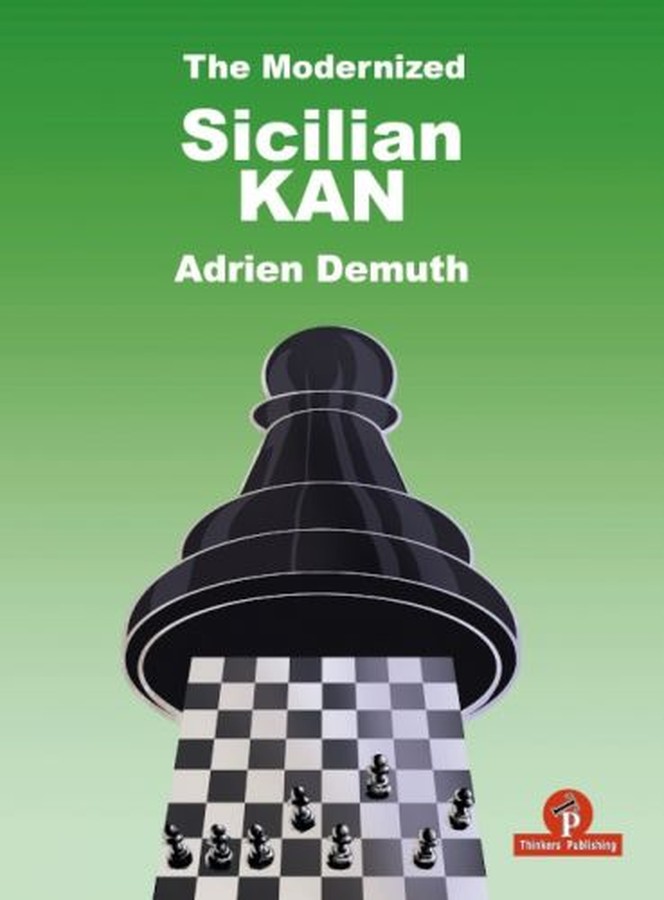| Nivå | C-D |
| Utgivelsesdato | Desember 2021 |
| Forfatter | |
| Pris | 370 NOK |
The Modernized Sicilian Kan
En skikkelig oppdatert repertoarbok for svart om å spille den ganske krevende Kan-varianten i Siciliansk: 1 e4 c5 2 Sf3 e6 3 d4 cxd4 4 Sxd4 a6. Boka dekker også noen aktuelle avvik fra hvit i tredje trekk.
Fra forfatterens forord:
When you are building your repertoire you have many choices available against 1.e4. Everyone knows the Sicilian is the most dangerous reply but there are so many choices! Most of them are highly theoretical such as the Najdorf or the Dragon. Some are very difficult to understand from a positional and dynamical point of view. The Kalashnikov and the Sveshnikov are two good examples, without even mentioning the amount of theory.
I have always been interested by less theoretical Sicilians. I have been playing the Classical Sicilian for a long time and right before the covid period, I decided to find a new one. The Sicilian Kan came to me as a very serious option, and I decided to work on it. In the meantime, my friend and editor Daniël Vanheirzeele offered me the chance to author a book about it. This came to me as a complete surprise, as I had no experience with it. In comparison with my work on the Reti and the Dutch (my two previous books), I am a newbie on the subject. But I decided to accept the challenge. I found it extremely interesting, as this gave me a fresh look at the positions. I think I managed to ask myself the questions everyone would have asked. I also work as a second for others and am accustomed to working on openings I do not necessarily play as well as finding the key ideas very quickly. So, after a deep initial work to understand the variations, I was ready to start writing!
I knew that keeping the variations to a reasonable length would be a hard task as the opening is generally considered to be better for White.
In opposition to my prior efforts, I decided to start with the mainlines. I did it both during my work and then in the structure of the book. It seemed better to address the most difficult lines first to prove that Black gets playable positions, and then take care of the less challenging lines. This approach allows you to have an idea of the typical positions and then compare it with the less usual lines so you may understand why the sidelines are not as good.
I take this as an opportunity to share my knowledge of openings and how I analyze them. I started this book with the idea that I wanted it to be useful for all levels of playing strength, from amateurs to even top grandmasters. I really consider the best books to be those where everyone can understand the basics of the variations while also being of use to anyone that aims at going deeper into the theory.
I based many of the lines and conclusions in this book not only on computer evaluation, but also from a practical point of view. While I did a deep dive using strong engines when analyzing the lines I cannot say that they are perfect. The most important thing is that all of the evaluations are based upon my own understanding and knowledge of chess.
Innholdet:
006 Preface
009 Chapter 1 - 5.Bd3
047 Chapter 2 - 5.c4
085 Chapter 3 - 5.Nc3
131 Chapter 4 - 5.Be2
159 Chapter 5 - 5.Be3
179 Chapter 6 - Various 5th moves
201 Chapter 7 - The Delayed Alapin Variation
229 Chapter 8 - Various 3rd moves
| Innbundet? | Nei |
| Type | Bok |
| Språk | Engelsk |
| Antall sider | 272 |

